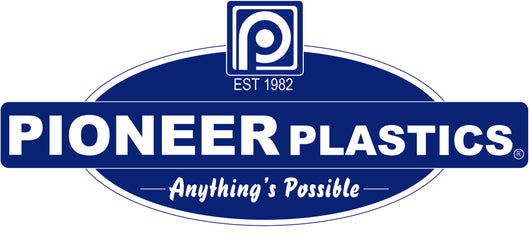
Lockers for Life | Pioneer Plastics | Locker Manufacturer South Africa
From canteen to corridor, cloakroom or construction site, Pioneer Plastics manufactures lockers for every application you can imagine. You’ll be surprised to learn the numerous benefits of plastic over steel lockers too. Take a look.
Durable, Secure Lockers for School, Work and Play
Lockers are a common sight on school corridors and in cloakrooms. You could also be familiar with food storage lockers, safekeeping personal belongings in public places like a spa or the airport. You’ve probably never given it much thought, but there are many uses for lockers!
When you think about them, steel lockers likely come to mind—but times have changed! Plastic lockers have proven to be far more durable and secure.
Steel Lockers vs Plastic Lockers
For years, steel was the—ahem—gold standard for locker manufacturing, but it has its downsides. Modern plastic manufacturing methods overcome these obstacles with ease.
Strength
Whether your lockers will stay indoors or outdoors, the point of a locker is to protect your belongings—so you want it to withstand the elements and brute force attacks. So, metal must be the obvious winner here, right? Wrong!
Plastic lockers can take quite some battering. Polyethylene might be lightweight, but it is approximately three times stronger than steel on a kilogram-to-kilogram basis. The material is also less prone to dents and scratches.
Plastic Lockers: 1
Fire Resistance
While polyethylene is available in flame-retardant formulations and performs remarkably well against extreme heat, it might have to concede this round to steel.
To protect against fire, compounds that inhibit, suppress or delay combustion are added to the virgin Polyethylene material. The compounds impede the burning at the ignition stage, left long enough, though the plastic will melt. Steel is considered fire resistant and can withstand higher temperatures for longer before softening.
Steel Lockers: 1
Plastic is a poor conductor of heat, making it an ideal option for food storage where the contents won’t likely be affected by fluctuating outside temps. Our plastic lockers are made from food-grade material and are UV stabilised.
Plastic gets 0.5
Moisture and Liquid Resistance
Leaving flames behind and moving to another element, water and liquids are no match for plastic.
Metal and its alloy, steel, are vulnerable to rust—and thus corrosion. The oxidation process weakens the steel so that it withers. On the other hand, plastic is impervious to liquids, making it ideal for lockers in kitchens, change rooms with showers or saunas, near swimming pools, or left outdoors.
Not only does plastic have a longer lifespan, but it’s also easy to clean. You can simply wipe them down (or hose them if need be). This is a no-brainer for food lockers in canteens, backpackers and kitchens.
Plastic Lockers: 1
When it comes to food lockers, it’s also good to consider that plastic is odour resistant (in case of any undesired spills).
Customisation
Lockers come in various dimensions depending on the application. Standard school lockers are either single-tier (full height) or multi-tiered. That’s when smaller lockers are stacked on top of one another, either three or four high.
However, these conventions only exist because the steel locker manufacturing process doesn’t allow much wiggle-room for design. Steel lockers are fabricated into their final configuration.
The good news with rotational moulding (the process for manufacturing plastic lockers) is that you can completely customise your lock set-up.
The lockers are linked together by a dovetail linking system. There is an indent in the locker itself with a linking pin that slides in from the back to fasten the lockers together. If you want three-high today and four-high tomorrow, or clothes lockers at the bottom with standard lockers on top—hey, presto. It’s yours.
Plastic Lockers: 1
And, because plastic is lightweight, you can move them around easily, which is ideal at construction sites!
Plastic Lockers get another 0.5
The Count
So far, it’s plastic lockers, 4; steel lockers, 1. Let’s see how the two face-off in a sudden deathmatch.
Sudden-Death Round
Ventilation: Both types of lockers offer good ventilation via slats or decorative holes.
Plastic: 1. Steel: 1
Colour options: Components of the plastic lockers, like doors and frames, can be manufactured in two different colours and come in unique colour combinations that are fast. Steel can be painted, but the paint can fade, chip or peel.
Plastic: 1. Steel: 0.5
Locking: Both types can be locked with padlocks or built-in combination locks.
Plastic: 1. Steel: 1
Allocation and Identification: Both can have laser-cut (engraved) plates adhered to the lockers.
Plastic: 1. Steel: 1
Affordability: The manufacturing process with steel—and the availability of the material—drives up the price. Rotational moulding (even with custom designs) is hands-down the most cost-effective option.
Plastic: 1. Steel: 0
The Verdict: Plastic Wins
Plastic takes the title with a 9-5.5 win.
CTA: What are you waiting for? Grab a winning plastic locker set for yourself. Order now.
